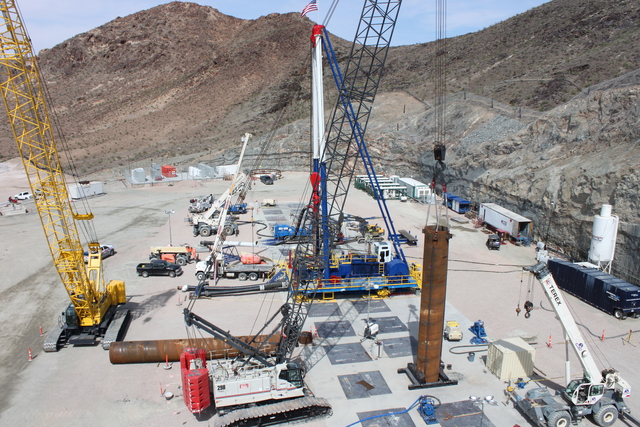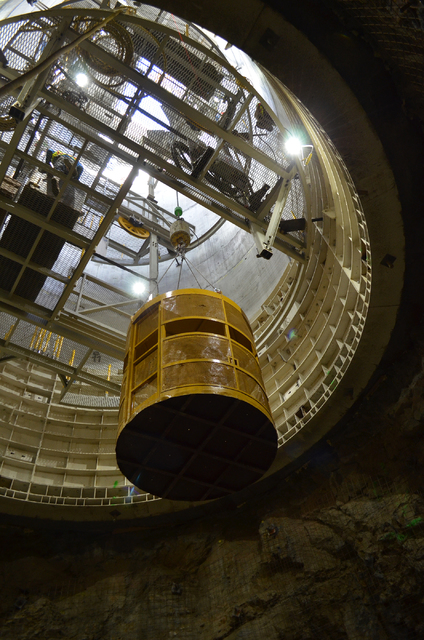Water district board OKs $150M installment on Lake Mead pump station
The Southern Nevada Water Authority board voted unanimously Thursday to throw another $150 million down a hole at Lake Mead.
But this is no ordinary hole.
When it’s finished in 2020, the authority’s low-lake-level pumping station is expected to keep water flowing to Las Vegas even if the reservoir shrinks to a “dead pool,” the point at which Hoover Dam no longer can release water downstream.
For a community that relies on Lake Mead for 90 percent of its water supply, such access is crucial, SNWA officials say.
The new pumping station is projected to cost about $650 million and work in conjunction with a three-mile, $817 million intake pipe that began drawing water from deep in the lake in the fall of 2015. The pumping station will expand the reach of that intake, allowing it pull from the bottom of the reservoir even if the water level drops another 190 feet from where it is now.
Work on the new facility began in 2015 with the excavation of a 520-foot vertical access shaft so workers can drill and blast a large underground chamber that will serve as the forebay for the pumping station. The contractor, Montana-based Barnard Construction Co., is now drilling 32 vertical well shafts, each about 500 feet deep and built to house a submersible pump specially designed for the project.
Construction is also underway to install pipes as big as 12 feet in diameter to carry water from the pump station to the authority’s treatment plants.
“The underground work is progressing very well and on schedule,” said Dave Johnson, SNWA deputy general manager of engineering and operations.
Of the $150.7 million approved Thursday, $113 million will go to Barnard to build the above-ground portion of the pumping station. The remaining $38 million will be used to buy 15 of the 32 massive pumps needed to lift several hundred million of gallons of water a day feet straight up.
“These are the largest submersible pumps in the world,” Johnson said.
The rest of the pumps will be bought at a later date, either from the same vendor in Spain or another manufacturer.
The finished station will be able to pump 900 million gallons of water per day, roughly 350 million gallons more than the authority delivers on a peak day in summer.
Moving that much water will require a great deal of energy — something on the order of 82 megawatts of electricity for average daily operations, or roughly the same used by 14,000 mid-sized valley homes, Mack said.
The authority sold $500 million in bonds last year to help pay for the facility.
Authority General Manager John Entsminger said he probably will go back to the board next year to seek approval for the rest of the money.
Valley water users already are helping to pay down the bond debt through a drought protection charge implemented by the authority a year ago and increased this year. The fixed charge is set to top out next year at about $5 per month for most residential customers.
Contact Henry Brean at hbrean@reviewjournal.com or 702-383-0350. Follow @RefriedBrean on Twitter.



















